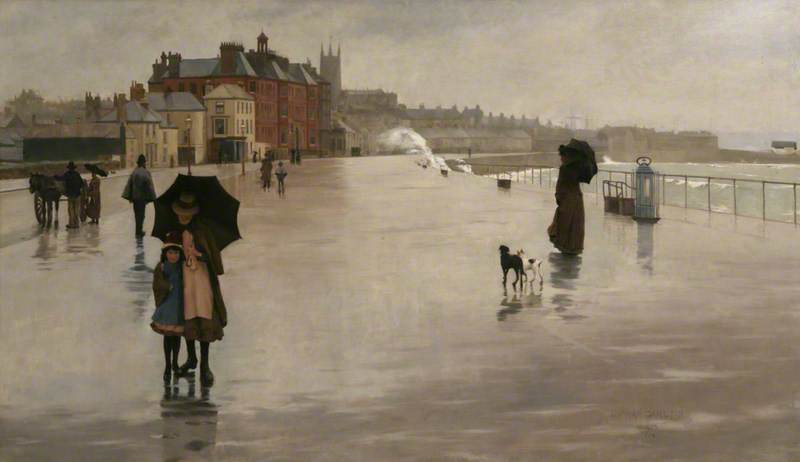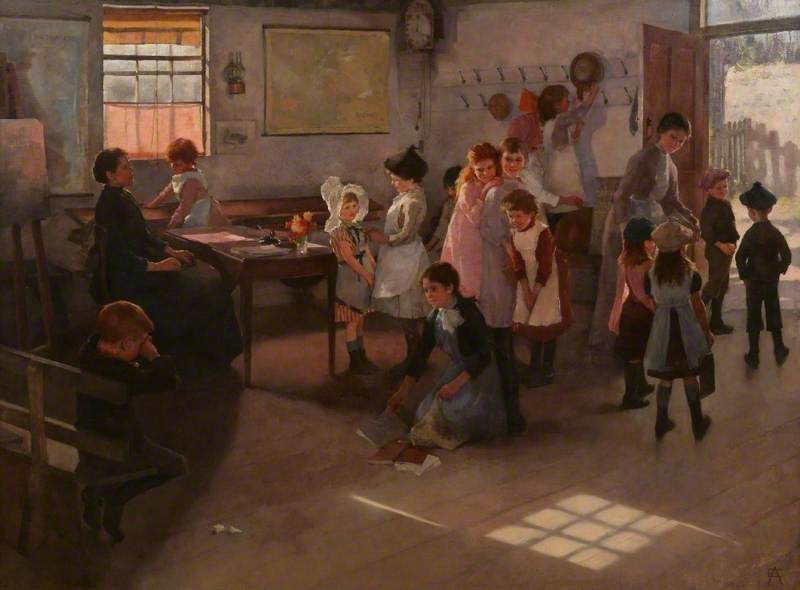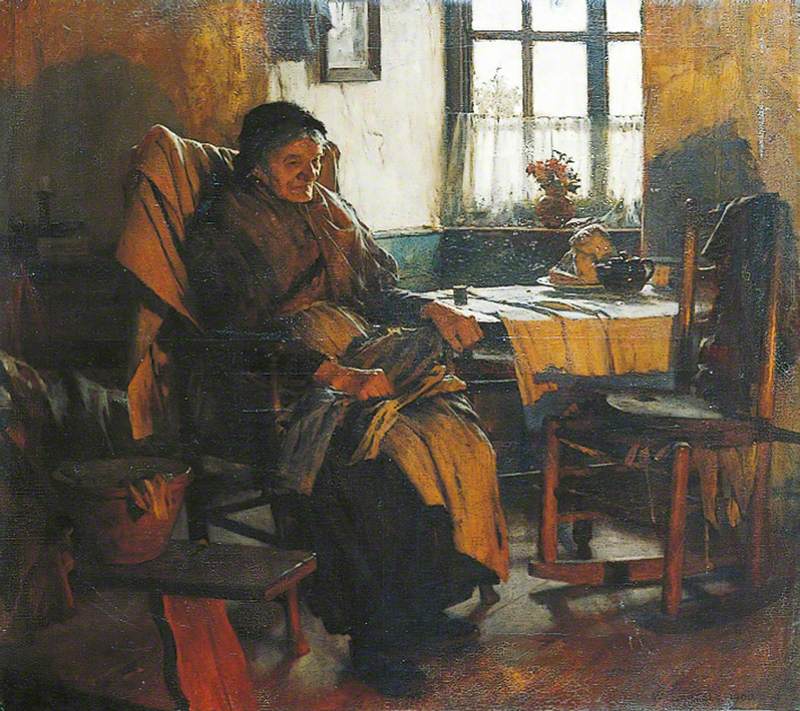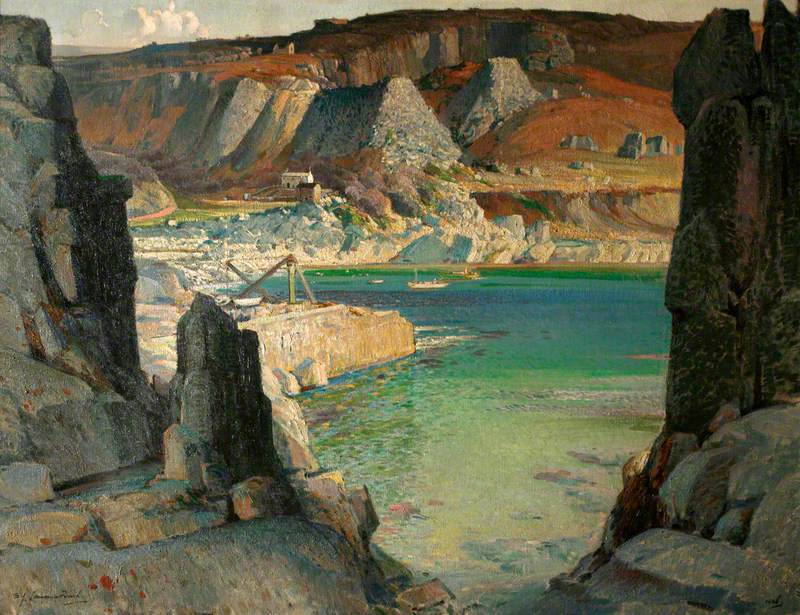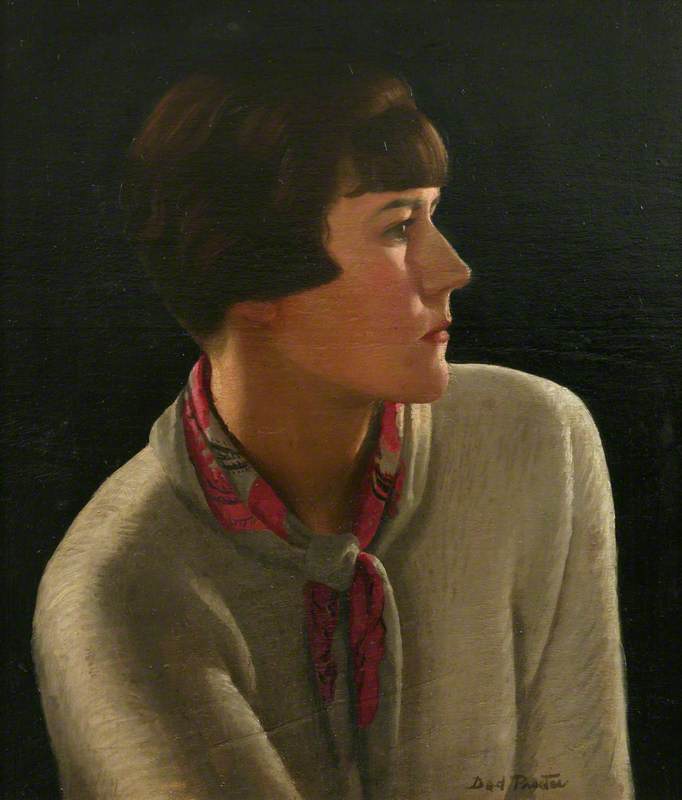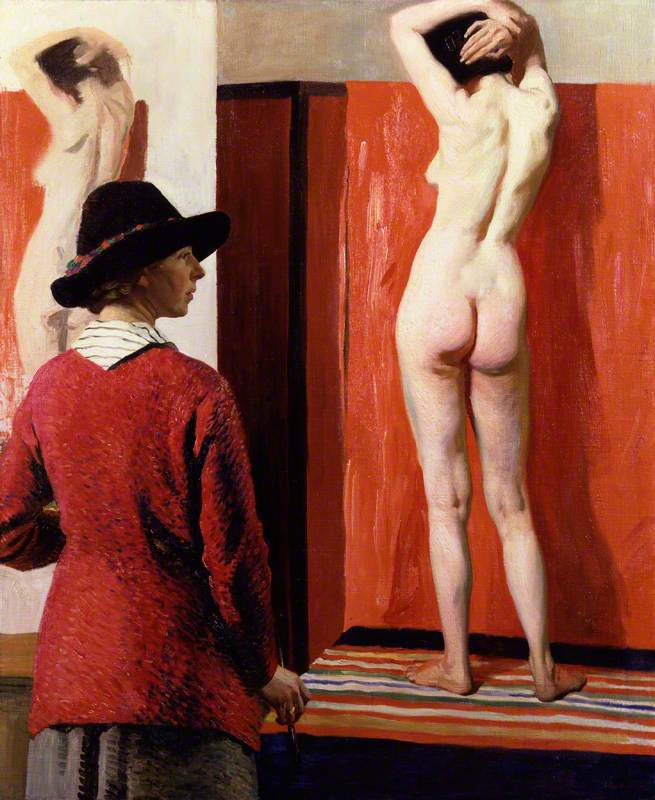Penlee House Gallery & Museum is a welcoming, friendly gallery set amid the beautiful, sub-tropical Penlee Park in the heart of Penzance.
West Cornwall has played an important role in the international art scene for many years. Our collection contains significant works from the Newlyn School and Lamorna Colony artists who thrived in the area from the 1880s to the 1940s.
Art Unlocked is an online talk series by Art UK in collaboration with Bloomberg Philanthropies. This Curation is based on a talk by Michael Harris, Curator and Deputy Director, at Penlee House Gallery & Museum, on 16th November 2022. You can watch a recording of the talk on Art UK's YouTube channel.
-
Zandvoort Fishergirl
Zandvoort Fishergirl 1884This tender portrait is of a young working girl in the fishing industry. She is stood in a fish preparation room with its easy-to-clean terracotta tiled floor and a wooden contraption possibly for scaling and gutting fish. Zandvoort is a little fishing village near Haarlem in the Netherlands. She is backlit with a golden light emanating from the small window visible at the top right, a technique giving the subject a halo. She has large, worker's hands, swollen purple with the cold, and is looking directly at us, fully engaged with the viewer. It is unusual that she is directly engaged with the viewer. Forbes is not as observational and distant as others of the Newlyn School at the time.
Elizabeth Adela Forbes (1859–1912)
Oil on canvas
H 68 x W 53.5 cm
Penlee House Gallery & Museum
-
Among the Missing – Scene in a Cornish Fishing Village
Among the Missing – Scene in a Cornish Fishing Village 1884At first glance this painting has an air of confusion about it. The leaden sky and rain-wet ground offer an insight into the sadness at the heart of the work. The central character, a young woman seemingly in distress, is being comforted by an older woman as she leads her away from the scene in the background. That scene is at the very heart of the narrative that Langley is illustrating. Just to the right of the post office door is a sheet of paper pasted to the wall. The paper contains the names of the fishermen recorded as missing from a recent disaster at sea. The name of the young woman’s husband, brother or father (and in some cases all 3) has been added to the list and she is inconsolable.
Walter Langley (1852–1922)
Watercolour over graphite, with scratching out, on paper
H 118 x W 85 cm
Penlee House Gallery & Museum
-
The Rain It Raineth Every Day
The Rain It Raineth Every Day 1889This is one of our most popular paintings and is very often commented on by our visitors, perhaps because they recognise and empathise with the people trying to shelter from water simultaneously from the sky and the sea. Something that Penzance promenade does exceptionally well at any time of year.
While this painting has many of the tropes of the Newlyn school, painted en plain-air with a muted palette and featuring people going about their everyday business, its composition is unusual. Dominating the scene, at the centre of this expanse of canvas, is nothing. Garstin has used absence as form. Making the focal point a large, grey area of wet promenade showing nothing but a faint reflection of the surrounding buildings and the sky.
Norman Garstin (1847–1926)
Oil on canvas
H 95 x W 164 cm
Penlee House Gallery & Museum
-
Eileen Mayo
Eileen MayoDoris Shaw, known as Dod, was born in London in 1890. Although not dated, this portrait of Procter’s friend, model and fellow artist was probably completed in the 1920s when Dod specialised in painting portraits, a theme that she would revisit many times throughout her career.
The strong, elongated limbs recall work by the French neo-classical painter Ingres. The model has a detached, distant expression as if being painted as a still life. Procter would likely have been aware of Christina Rosetti’s poem of 1869 'In an Artists Studio', wherein the poet subtlety derides a male artist for painting his model ‘not as she is’ but how he ‘wishes her to be’. Dod Procter seems to paint her studio models just as they are, including herself.
Dod Procter (1892–1972)
Oil on canvas
H 80 x W 70 cm
Penlee House Gallery & Museum
 © the artist's estate / Bridgeman Images. Image credit: Penlee House Gallery & Museum
© the artist's estate / Bridgeman Images. Image credit: Penlee House Gallery & Museum
-
Kerris Quarry
Kerris Quarry 1937This painting typifies the change in style and subject matter as we move from the Newlyn School into the Lamorna colony. The interest in colour, light and a lack of narrative is evident here in Birch’s painting of 1937.
Samuel John Lamorna Birch (1869–1955)
Oil on canvas
H 140 x W 188 cm
Penlee House Gallery & Museum
 © the artist's estate / Bridgeman Images. Image credit: Penlee House Gallery & Museum
© the artist's estate / Bridgeman Images. Image credit: Penlee House Gallery & Museum
-
Men Working in a China Clay Pit
Men Working in a China Clay Pit 1912This watercolour shows a group of people working in an open clay mine. It is unusual in that almost the entire work is described in shades of white. One can imagine how bright the scene must have been, especially when the sun came out.
Dame Laura Knight was one of the twentieth century’s most prolific British artists. Her career spanned nearly eighty years and the extraordinary breadth of her talent encompassed a huge variety of subjects, techniques and styles. Her achievements included being the first ever elected female Royal Academician, a highly acclaimed War Artist and being made a Dame of the British Empire.
Laura Knight (1877–1970)
Watercolour on paper
H 62 x W 87 cm
Penlee House Gallery & Museum
 © reproduced with permission of the estate of Dame Laura Knight, DBE, RA / Bridgeman Images. Image credit: Penlee House Gallery & Museum
© reproduced with permission of the estate of Dame Laura Knight, DBE, RA / Bridgeman Images. Image credit: Penlee House Gallery & Museum


